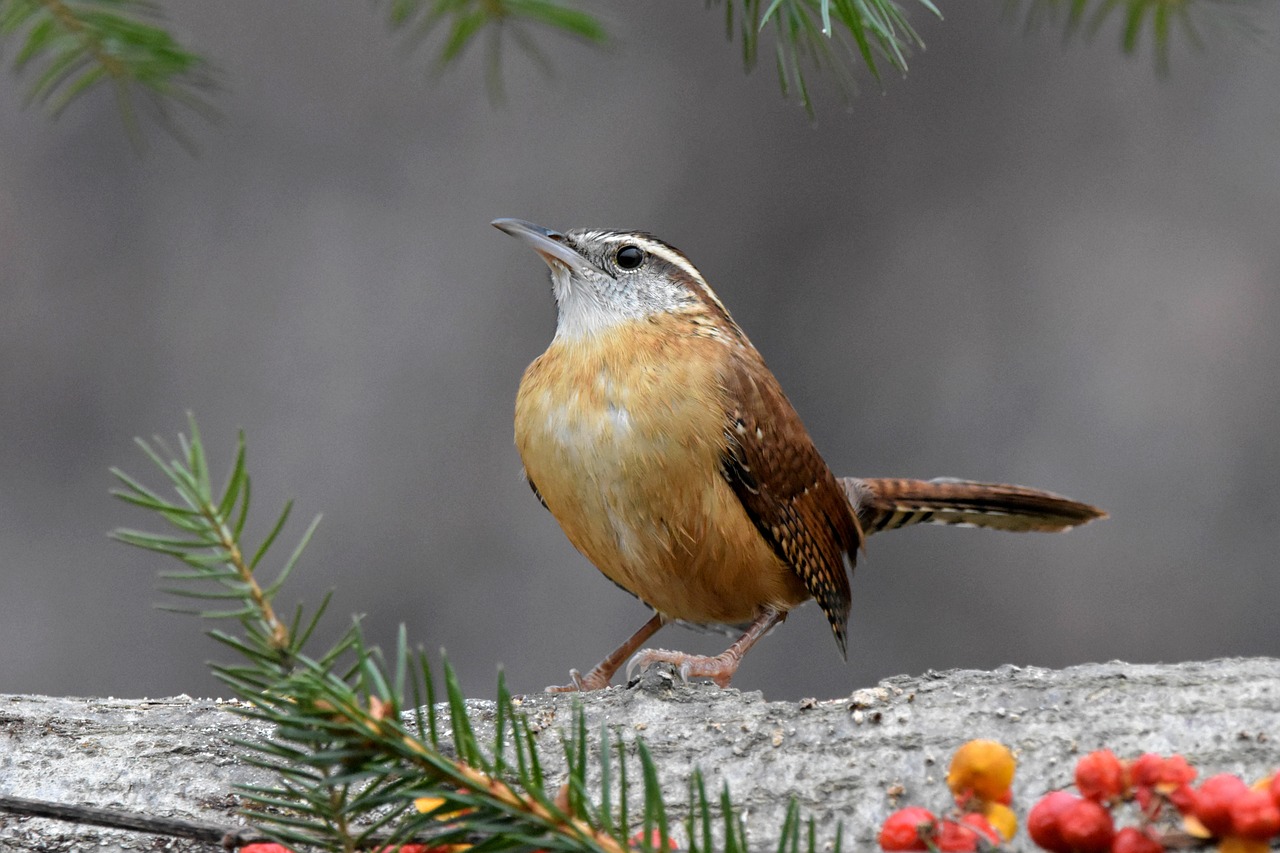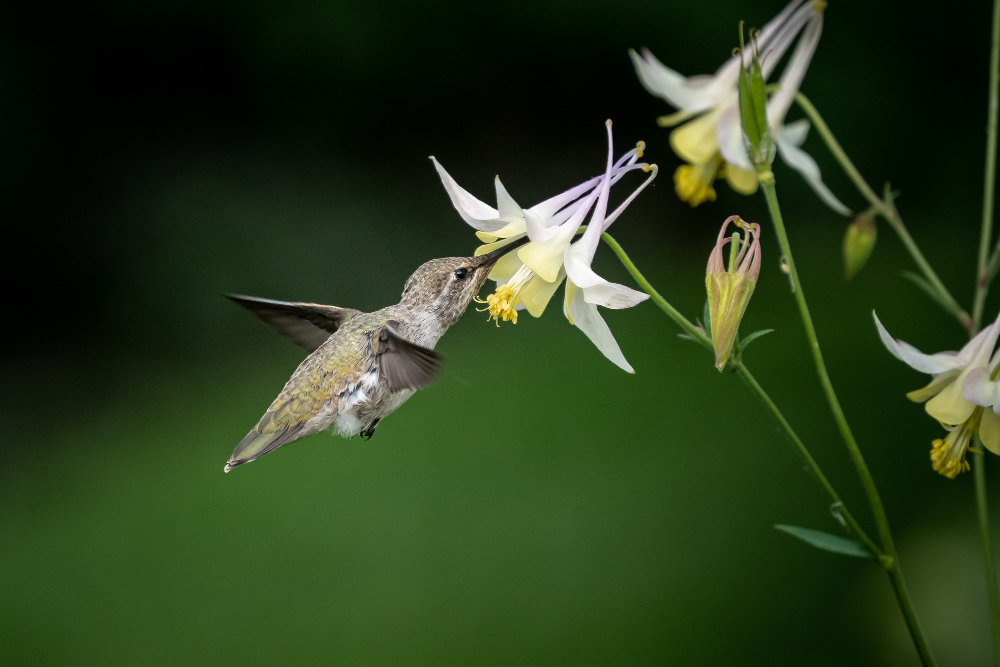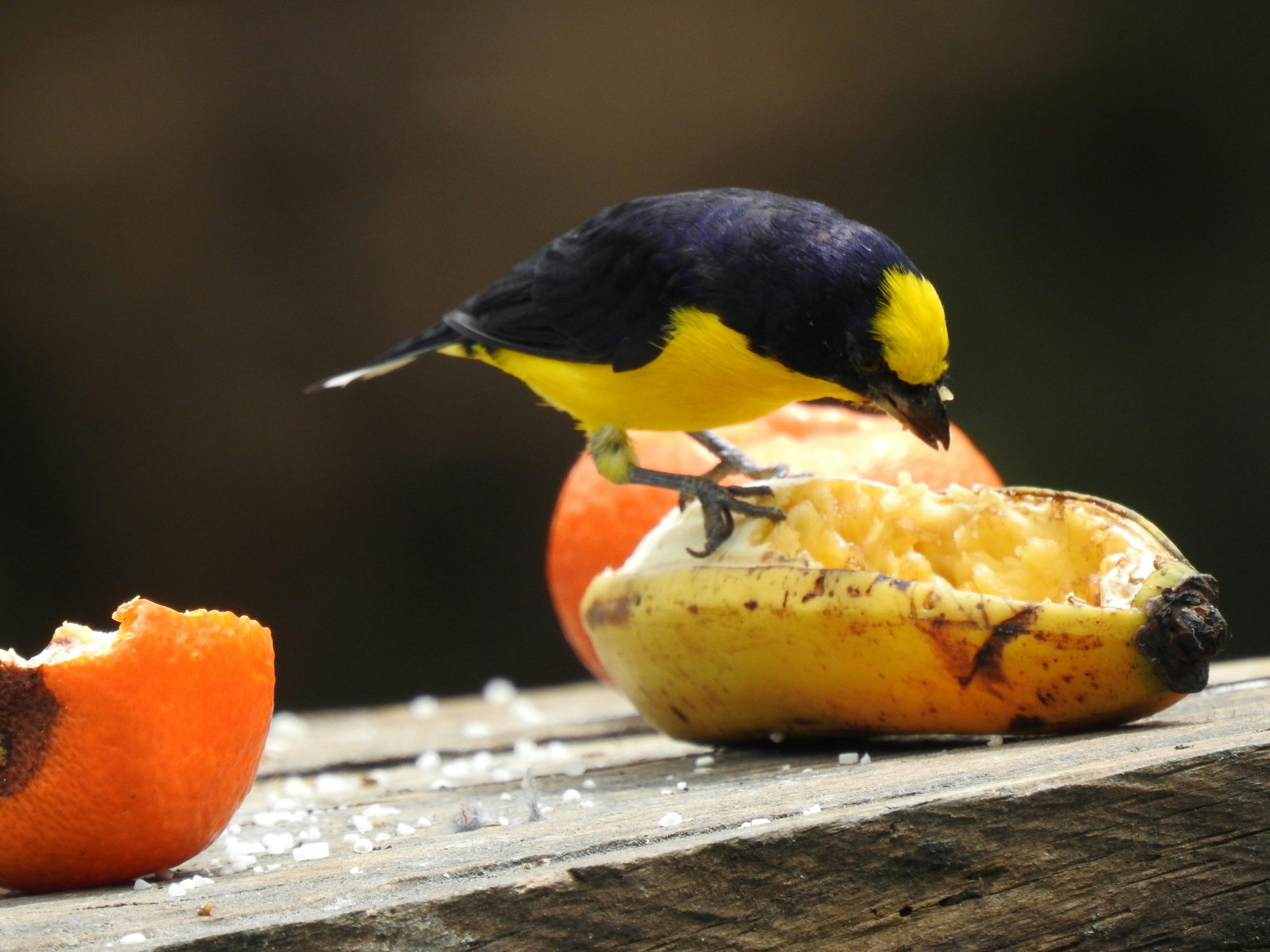With its loud voice and boisterous personality, the Carolina wren is one of the most conspicuous birds across the Eastern US. It energetically belts out its declaration of “teakettle, teakettle, teakettle” through summer and spring. How Carolina Wren Sleeping, what are their routines and habits through the night?
Typical Carolina Wren Sleep Patterns
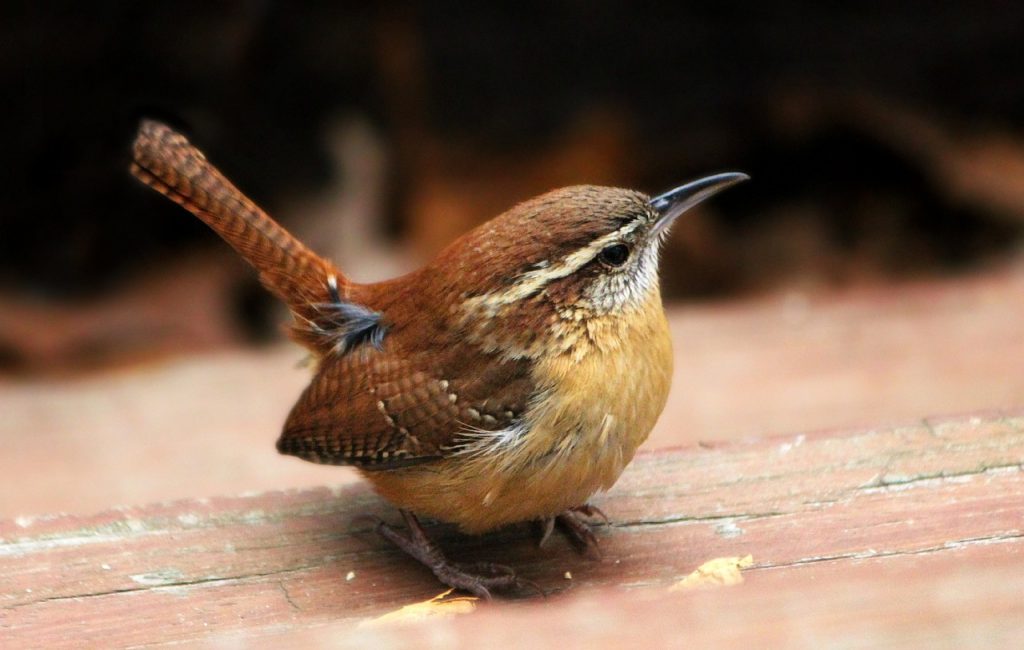
To understand Carolina wren sleep, we must first examine some baseline sleep statistics for the species when undisturbed:
Daily Sleep Duration
Birds tend to sleep less than mammals overall. Carolina wrens likely average close to the typical songbird range of 6-8 hours of actual sleep daily. Their smaller bodies require relatively less sleep than large mammals. Often this slumber is broken into shorter bouts.
Distribution of Daytime Naps
Carolina wrens occasionally nap during the daytime, with more frequent catnapping by nestlings and juveniles. However most sleep occurs during overnight periods without activity demands.
How Carolina Wren Sleeping Nightly Routine
As diurnal creatures, Carolina wrens typically initiate overnight sleep approximately 30-60 minutes after sunset. This sleep bout then lasts 6-8 hours until morning. Their cycles match the rise and fall of daylight within which they operate.
Summarizes estimated Carolina wren baseline sleep cycles:
| Sleep Characteristic | Carolina Wren Average |
|---|---|
| Total daily sleep | 6-8 hours |
| Frequency of daytime naps | Occasional |
| Nightly sleep period | 8+ hours |
These represent general averages – wren sleep can shift due to environmental factors like nest defense, prey availability, and seasonal changes. But their standard sleep architecture revolves around overnight condensed slumber.
Where Do Carolina Wrens Sleep? Roosting and Nesting Behaviors
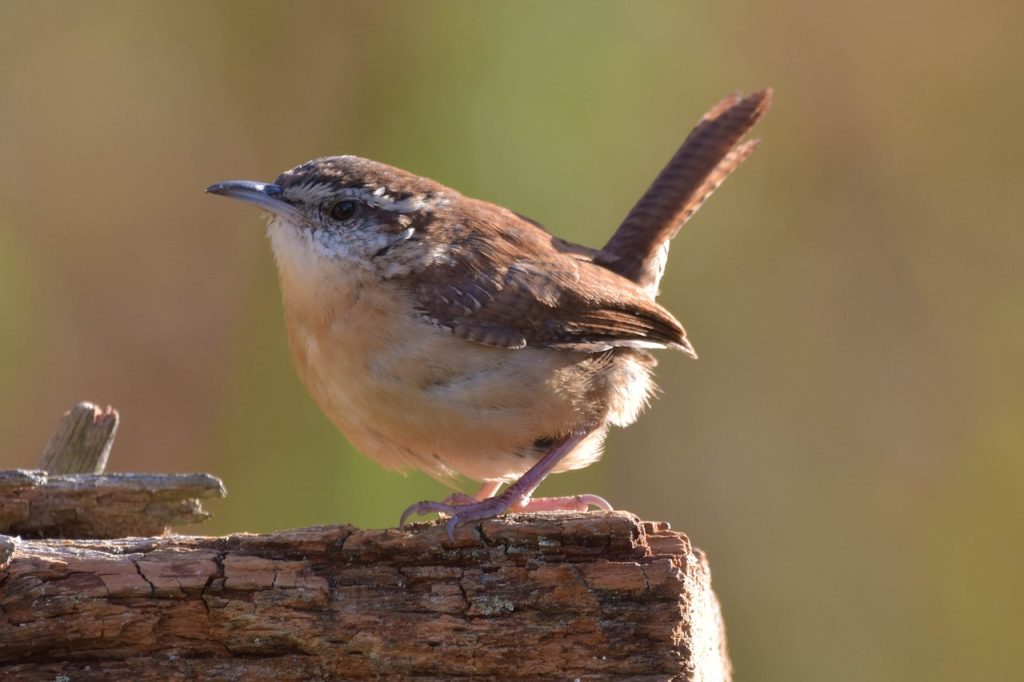
Understanding where Carolina wrens spend nights sleeping depends on whether examining roosting or nesting birds:
Roosting Carolina Wren Sleep Sites
Non-nesting wrens utilize dense shrubs and cavities that provide shelter and insulation while sleeping:
- Conifers – Wrens roost in needle clusters of dense conifers like red cedar for cover.
- Vines – Tangled vines or shrubs decked in thick vines are commonly used sleeping sites.
- Cavities – When available, carolina wrens use old woodpecker holes and similar cavities.
When overnight temperatures drop, wrens preferentially pick well-insulated cavity roosts offering warmth.
Nesting Wren Sleep Accommodations
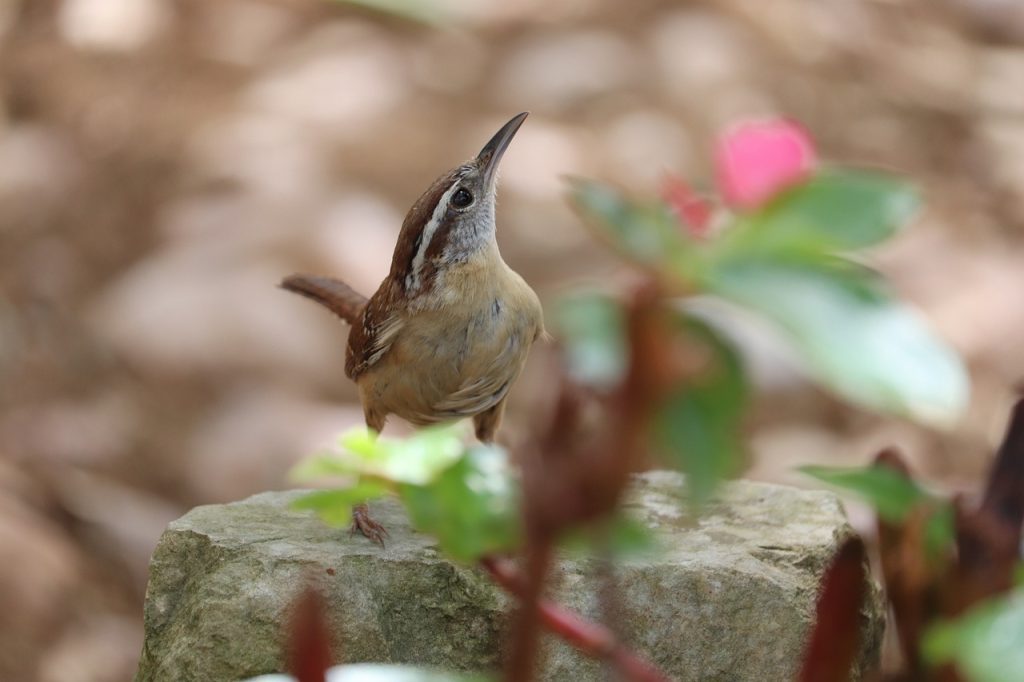
Once paired, the priority becomes the nest holding eggs and offspring:
- In Nest – Carolina wrens sleep inside the nest while incubating eggs and brooding hatchlings.
- Near Nest – Once chicks fledge, parents sleep on branches very near the nest site.
So nest proximity is vital once breeding begins to care for eggs and chicks. The nest itself provides a sleeping refuge early on.
As a year-round resident across the Eastern US, the ability to find suitable protected sleeping quarters helps Carolina wrens persist through winter. Their roosting habitats allow surviving frigid nights when temperatures can fall below their feather coat’s insulation capacity. Safe sleep sites are essential all year for survival and successful reproduction.
How Dangerous is Sleep for Carolina Wrens? Predation Risks and Defense
The long overnight sleeping period leaves wrens physically vulnerable. But they utilize adaptations and behavior to reduce threats:
Avoiding Predators When Possible
Wrens begin evasion before sleep itself by choosing difficult to access roost spots via:
- Thorny vines – Predators face an obstacle course entering some wren retreats.
- Cavities – Hollow trees or old woodpecker holes offer an enclosed safe site.
- House eaves – Some wrens even wedge up under house roof lining for protection.
Such selective nesting minimizes initial discovery by hunters.
Early Warning System: Vigilance Before Dozing Off
Wrens take active steps to ensure safety before succumbing to slumber’s vulnerability:
- They perch for up to 30 minutes watching for danger prior to actual sleep. Delaying rest until alert.
- Nesting wrens take turns being the lookout to allow the mate to sleep first.
These precautions reveal wrens minimize risks before sleeping.
Staying on Guard: Light Slumber and Rotating Watch
While songbirds can’t achieve deep slow wave mammalian sleep, wrens further moderate sleep depth to manage threats:
- They likely maintain lighter sleep to enable quick awakening.
- Parent wrens trade off 2-3 hour sleep shifts, so one remains alert.
Shows anti-predation adaptations related to sleep in Carolina wrens:
| Anti-Predation Adaptation | How It Reduces Sleep Danger |
|---|---|
| Protected roost site selection | – Creates barrier against predator entry |
| Pre-sleep vigilance period | – Confirms area safety before dozing vulnerability |
| Lighter overall sleep intensity | – Enables rapid awakening to escape threats |
| Alternating sleep between mates | – Provides continual alert guard |
So between cunning shelter choices, alert behaviors before bedtime, and staying primed to awaken, wrens manage predation hazards well. These adaptations help the Carolina wren survive nightly even with small size.
How Do Seasonal Factors Impact Carolina Wren Sleep Patterns?
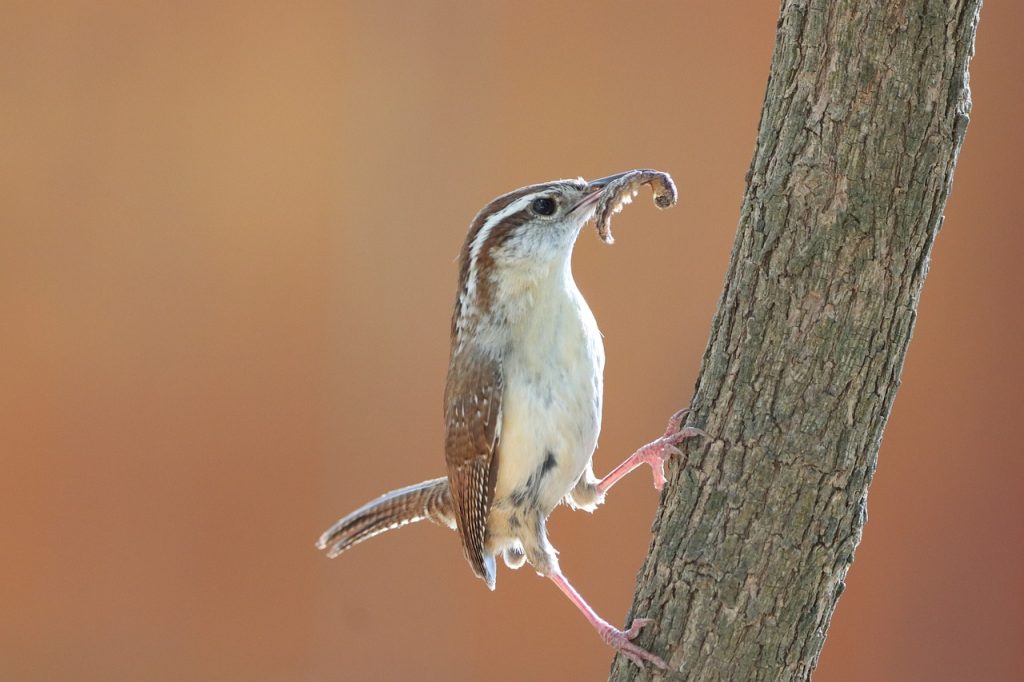
While Carolina wrens maintain generally steady sleep patterns, seasonal influences can shift routines due to:
Colder Weather Equals More Rest
Colder temperatures increase energy demands for thermoregulation. This leads wrens to spend more time sleeping in sheltered cavities that require less warmth generation. Their appetite also increases with more calories burned staying warm.
Shorter Winter Days
The winter’s later dawn and earlier sunset compresses the activity period available. Wrens occasionally compensate with slightly longer overnight sleep. Some extra rest helps fuel their lively activity packing shorter winter days.
Long Summer Days
In contrast, the summer’s expanded daylight offers more opportunity for productive hours. Wrens minimize resting to exploit food availability and long, warm evenings. They trim overnight sleep closer to the 6 hour minimum daily requirement when possible.
defending nests
Once eggs hatch, adult wrens can lose significant sleep. Guarding and provisioning nestlings becomes an almost 24-hour job. Until chicks fledge around day 12-14, parents operate on little rest. Their total sleep drops to perhaps 4 fragmented hours in high alertness.
So from winter’s drained batteries to summer’s overflowing activity to the intense demands of reproduction, Carolina wren rest patterns shift along with seasonal pressures and prospects. But their skill securing safe and sheltered roosts provides year-round respite during the vulnerable overnight hours.
Conclusion
The dynamic biography of Carolina wrens reveals sleeping habits tuned to withstand threats and seize opportunities. As a small bird vulnerable to predators, wrens select dense concealed nests that minimize risks during slumber. Their lighter sleep facilitates quick reaction to any disturbance that penetrates protection. These adaptations help wrens persist despite the long immobile hours spent on the open branch.
Carolina wrens align sleep cycles to seasonal pressures from harsh winter nights to endless summer twilights. But energetic defense of fledglings emerges as the most taxing season, draining parental rest for weeks. Only by alternating shifts can mates manage fragmented rest amidst perpetually clamoring chicks.
In these ways Carolina wrens demonstrate sleep patterns strategically adapted both to withstand and maximize the shifting seasons they endure. Their vocal exuberance proclaiming the rising dawn gives little hint to the clever overnight coping behaviors enabling their boisterous lives. But behind the curtain of night, wrens navigate sleep’s demands and dangers as adeptly as they explode into song with each breaking sunrise.
Frequently Asked Questions about Carolina Wren Sleeping Patterns
Still curious about the sleep habitats and behaviors of these noisily charismatic songbirds? Here are answers to 10 common questions:
Do Carolina wrens sleep in nest boxes?
Carolina wrens readily accept nest boxes as cavity substitutes. They choose enclosed spaces providing insulation and protection from the elements and predators while sleeping. Nest boxes replicate tree hollows they would inhabit naturally. So given proper aperture size and filling material, wrens sleep contentedly in advertised housing.
What time do Carolina wrens go to sleep at night?
As diurnal birds, Carolina wrens retire a short while after dusk. During non-breeding seasons, they typically become inactive for the night within 30-60 minutes post-sunset. Their overnight sleep bout extends 8 or more hours until waking a bit before sunrise. This routine syncs with available daylight for peak activity.
How do Carolina wrens keep warm while sleeping?
Beyond picking protected, insulated cavities and thick vegetation, sleeping Carolina wrens regulate body temperature by:
- Fluffing feathers for increased insulation
- Sequestering in cavities that better hold warmth
- Huddling next to mates or as family groups during colder periods
- Letting temperature drop naturally overnight to conserve energy
Reducing exposed surface area and huddling together helps wrens retain heat while resting on cold nights.
Where should I place a nest box for Carolina wrens?
Ideally position the nest box 5-10 feet high on a tree, post, or wall in somewhat shaded areas near cover. Face the hole away from prevailing winds and rains. Place a layer of pine straw or wood shavings inside along with some twigs for wrens to fashion a nest. Locations near adequate food but away from feeders reduce conflicts with other birds.
How much does a Carolina wren sleep every day?
The typical Carolina wren sleeps around 6-8 hours daily. However, mates with nestlings operate on as little as 4 fragmented hours due to constant feeding and protection demands. So while they average 6-8 hours overnight usually, reproductive duties can severely cut rest until fledglings leave the nest at 2 weeks old. Hardworking parents regain lost sleep once chicks independence reduces caretaking.
What’s the best time to see a sleeping Carolina wren?
Early morning just before sunrise offers the best opportunity to observe still-roosting Carolina wrens before the day erupts with activity. Their overnight sleeping bout extends until first light cues them to wake and launch bright melodies welcoming the new day. Catching a glimpse of their puffed silhouette right before the energy explodes is a special treat.
Do Carolina wrens ever take naps?
While Carolina wrens get most sleep consolidated overnight, adults occasionally nap briefly during quiet mid-day periods. Juveniles and nestlings nap more frequently when parental care allows. Power napping helps recharge them for intense begging and training. But most Carolina wrens resist napping to maximize foraging time from dawn to dusk across seasons.
Why do Carolina wrens sleep in such dense shrubs and vines?
As small birds vulnerable to predators like snakes, hawks and cats, Carolina wrens select sleeping sites providing protection via dense barriers of branches or thorns. Tangled vines make access difficult for larger hunters. This sheltering habitat allows safer slumber through immobile hours until waking active and loud come daybreak.
How do you tell if a Carolina wren’s nest is empty at night?
Checking for a sleeping adult is the only way to confirm wren vacancy after dark. Flashlights will reveal an adult’s silhouette if still actively nesting overnight. However, once chicks fledge at 12-18 days old, the entire family abandons the nest by daylight hours. So an empty, intact nest in daytime strongly signals the birds have fledged and moved on from that cavities shelter.
What acoustic clues indicate a sleeping Carolina wren?
The loud iconic call going quiet marks a likely slumbering wren. If “teakettle!” outbursts go suddenly silent in their territory as sunset nears, this suggests they have settled into sleep for the night. Staying noiseless for 8 or so hours until the next dawn’s awakening is the auditory evidence a wren has gone dormant for the night. They use the safety of darkness to recover energy before feverishly greeting sunrise anew.

